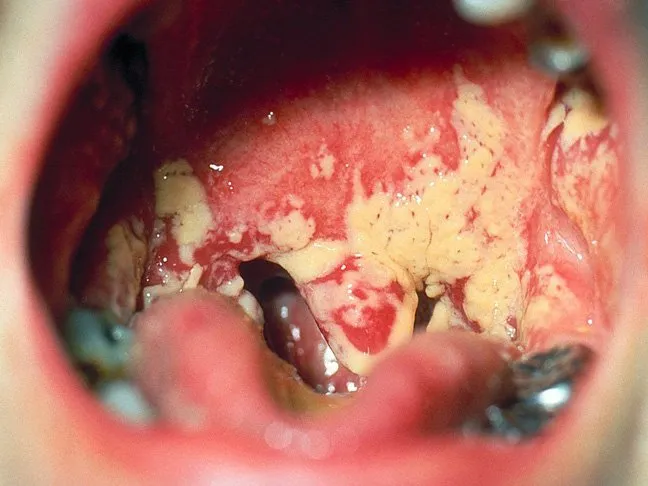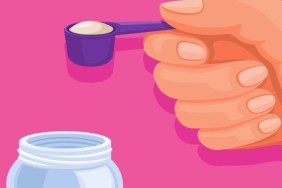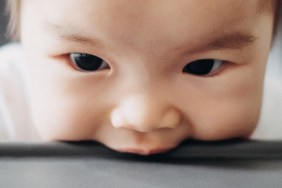There are two common types of thrush in babies: oral thrush and yeast diaper rash. These conditions may occur individually or at the same time, and they’re both caused by an overgrowth of yeast (caused by a fungus called Candida). Read on for everything you need to know about thrush, from thrush symptoms to treatments.
What does thrush look like?

Thrush in the mouth (or oral thrush) can look like soft white patches that may bleed when scraped.
As a yeast diaper rash, thrush in infants begins like any minor irritation in the sensitive creases of baby’s legs and backside: red and patchy. As the condition worsens, it may include inflammation, sores, and even bleeding in your baby’s diaper area.
What thrush symptoms should parents watch for in babies?
Oral thrush:
• White patches in the mouth that may resemble cottage cheese
• Mouth soreness
• Loss of appetite or a refusal to eat
Yeast diaper rash:
• A slightly raised border on the rash
• The presence of smaller, patchy rashes that are separate from the primary rash
• Resistance to diaper rash creams
• Scaly skin
Not all thrush symptoms look the same, and some children only experience mild symptoms. In fact, many children experience some level of thrush without their parents ever noticing.
What causes it?
Yeast naturally occurs in the mouth and digestive tract. Oral thrush is the result of an overgrowth of yeast; the same overgrowth causes an infection in your baby’s diaper area, too. But here’s the deal: There are certain things you can do as a mom to help keep your baby from getting thrush.
How can you prevent thrush in babies?
There are several easy things you can do to prevent thrush in babies, including:
• Avoid giving her antibiotics, if possible, since certain antibiotics can cause thrush
• Clean and sterilize bottles after use
• Change your baby’s dirty diaper as quickly as possible
• Breastfeed your baby; breast milk contains protective antibodies
How long does thrush last?
A mild case of thrush may clear up on its own after a few days, usually less than a week. For moderate to severe cases, though, treatment is usually required.
How is thrush in babies treated?
For oral thrush or severe diaper rash, there are many things you can use in the home to soothe symptoms.
For diaper rash, cleanse skin with gentle soaps and soft sponges. If that doesn’t work, a doctor may prescribe a specialized antifungal cream like Nystatin.
Check in with your doctor about oral thrush treatment; she may recommend that you use a gel like miconazole to kill the fungus. The gel is applied directly to the affected area in the baby’s mouth, and it’s often available without a prescription.
How long does it take for thrush in babies to clear up?
If you pursue a course of treatment that involves an antifungal cream or gel, your baby’s thrush should clear up within a week. For severe thrush, a two-week course of treatment may be necessary. Medical professionals recommend that you continue treatment for at least 48 hours after all symptoms have cleared up.
When should you take your baby to the doctor?
If your baby has oral thrush, you should call a doctor right away as the infection can spread to you when you breastfeed. For yeast diaper rash, contact a doctor if symptoms worsen or fail to improve after a week of treatment.
Is oral thrush contagious?
Yes. If your baby has thrush and your nipples become sore and red after breastfeeding, the infection may have spread to your breasts. Other symptoms include shooting pain in the breasts and cracked nipples. If you notice these symptoms, you may benefit from a miconazole treatment. Check in with your doctor; she may recommend that you apply the cream directly to your nipples two to four times per day for a week. If that doesn’t clear up the infection, visit your doctor.
Knowing now rather than later how to handle this common, but complicated, problem saves you time and suffering the first time — or the next time — thrush happens. Where thrush symptoms start for your family makes all the difference in which treatment approach works best. Catching thrush in your baby means staying alert for the early warning signs of rashes and discomfort in those most sensitive areas. Keeping thrush at bay can take a variety of steps, and the earlier it’s caught, the easier those symptoms are to control.








